Using a Fitness Center Does Not Have to be an Exercise in Frustration: Tips for People with Mobility and Visual Disabilities
By
June Isaacson Kailes, Associate Director
Center for Disability Issues and the Health Professions
Western University of Health Sciences
Version 1.1, November 2008
The Rehabilitation Engineering Research Center (RERC) on Accessible Medical Instrumentation
Required citation:
Kailes, J.I. Using a Fitness Center Does Not Have to be an Exercise in Frustration: Tips for People with Mobility and Visual Disabilities, 2008, Published and distributed by Center for Disability Issues and the Health Profession, Western University of Health Sciences, 309 E. Second Street, Pomona, CA 91766‑1854, Phone: (909) 469‑5380, TTY (909) 469-5520, Fax: (909) 469‑5503, Email: ahcs@westernu.edu, www.cdihp.org
This work was partially supported by the National Institute on Disability and Rehabilitation Research, U.S. Department of Education, under grant # H133E020729, Rehabilitation Engineering Research Center on Accessible Medical Instrumentation (RERC-AMI). The opinions contained in this manuscript are those of the author and do not necessarily reflect those of the Department of Education.
Permission is granted to copy and distribute this material provided that:
-
Proper copyright notice and citation is attached to each copy;
-
No alterations are made to the contents of the document;
-
The document is not sold for profit; and
-
The Center for Disability Issues and the Health Professions is notified of such use. Please contact jik@pacbell.net
Acknowledgements
For their generous giving of time, attention to details, contributions and thorough reviews of various drafts of this manuscript, the author gratefully acknowledges and thanks
-
Richard Devylder, Special Advisor to the Director, Office on Access and Functional Needs, Governor’s Office of Emergency Services, Sacramento, California
-
Lauren N. Howard, Disability Consultant, Lincolnton, Georgia
-
Melissa R. Lemke, Rehabilitation Engineer, Rehabilitation Engineering Research Center on Accessible Medical Instrumentation, Madison, Wisconsin
-
Christie Mac Donald, Senior Policy Analyst, Center for Disability Issues and the Health Professions, Pomona, California
-
Dot Nary, National Institutes of Health, Doctoral Trainee, University of Kansas, Lawrence, Kansas
-
Amy Rauworth, Associate Director, National Center on Physical Activity and Disability, Chicago, Illinois
-
Jim Rimmer, Director, National Center on Physical Activity and Disability, Chicago, Illinois
-
Molly Follette Story, Principal, Human Spectrum Design, Santa Rosa, California
-
Photographs
-
National Center on Physical Activity and Disability,
-
Inclusive Fitness Initiative (see http:www.inclusivefitness.org [sic]
-
1. Introduction
You know you should be more active. You would like to find a usable fitness center, some times called a health club. The process of looking for a fitness center can be trying. Sometimes it does not seem to be worth the effort. Maybe you joined a fitness center in the past but did not know how to deal with the barriers you experienced, so you stopped going.
1.1 Recognizing the Barriers
Past frustrations should not stop you from using a fitness center. Yes, there are barriers, but there are also solutions. Some of the common barriers experienced by people with disabilities 1,2 include:
-
The fitness facility is not physically accessible
-
The facility’s equipment and group classes are not accessible or not usable
-
The staff does not have education and training about disability or accessibility issues
-
The staff and some members have negative attitudes about people with disabilities
Some of the facility’s policies and procedures discriminate against people with disabilities
Have you experienced any of these problems? How can you deal with these barriers and make using a fitness center easier? How can you get fitness centers to make changes?
Managers and owners of fitness centers are beginning to realize that in order to stay in business they can’t appeal only to those who are young, thin, fit, and who have no activity limitations. More diverse groups of “real” people are using fitness centers, including older adults, obese people and others who have never before exercised. This changing user group and customer-base is beginning to make fitness centers offer a more welcoming environment for people with disabilities. But many owners and operators of fitness centers are still not aware of the barriers that make using their facilities difficult for people with activity limitations. They are not yet designing their centers to provide equipment and features that are usable by people with a wide range of abilities and needs.
1 Rimmer, James H., Riley, Barth, Wang, Edward, Rauworth, Amy, and Jurkowski, Janine. (2004). Physical Activity Participation Among Persons with Disabilities: Barriers and Facilitators. American Journal of Preventive Medicine, 26(5), 419-425.
2 Rimmer, J. H. (2005). The Conspicuous Absence of People with Disabilities in Public Fitness and Recreation Facilities: Lack of Interest or Lack of Access? American Journal of Health Promotion, 19, 327-329.
1.2 How This Article Can Help You
This article describes some of the barriers experienced by people with mobility and visual disabilities when they use fitness facilities and it shows you ways to remove or reduce these barriers. It explains your right to use an accessible fitness facility and teaches you how to advocate for changes. This article provides specific information for people with visual disabilities and mobility limitations.
The following sections offer you practical tips, questions to ask, places to go for more help, and ways to make fitness centers more accessible. The article describes many low or no cost solutions that can be used right away, and also gives you resources and information to help you work with fitness centers toward getting even better solutions over the long term.
1.3 Know Your Rights
Fitness centers are covered by a law called the Americans with Disabilities Act (ADA)3. Like other public places, fitness centers must provide equal access to the facility for people with disabilities. They must provide accessible parking, entrances, restrooms, paths of travel, signage, etc. In addition, they must not discriminate against anyone because of disability. This means, for example, they cannot deny service or refuse membership to people with disabilities.
The ADA requires that privately owned fitness centers built after 1992 must follow specific design guidelines the ADA Accessibility Guidelines (ADAAG). Centers that were built before 1992 must remove barriers when it is “readily achievable” (That is, if it is easy to do and can be done without much difficulty or cost4). The size of the facility is considered when deciding what changes it needs to make. For example, a small private health club might not be able to remodel a locker room to make it accessible, but a facility, owned and operated by a large company, would have the financial resources to do so.
As a fitness center user, you have the right to ask the center to remove barriers that make it harder for you to use the facility. The ADA law can only be enforced if you bring it to the attention of the fitness center’s staff and owners. If you see a problem, you have to tell someone who has the power to make changes. Often they are not aware that barriers exist or they may not think there is a problem because no one has ever brought it to their attention.
When you tell fitness center staff about the barriers you find, it is helpful to be prepared with ideas on how to reduce or remove the barriers. This is especially true when discussing the legal ADA requirements. You may want to have an ADA checklist and other materials that explain the ADA Accessibility Guidelines (ADAAG) so the fitness center will understand what they may need to do to remove the barriers.
ADA Resources
-
Checklist for Readily Achievable Barrier Removal – an easy-to-use survey tool to help people identify barriers in their facilities: http://www.usdoj.gov/crt/ada/checkweb.htm
-
U.S. Access Board – an independent federal agency that provides extensive information on ADA Accessibility Guidelines: http://www.access-board.gov or (800) 872-2253
-
ADA & IT Technical Assistance Centers – regional resource centers that provide information on the ADA: http://www.dbtac.vcu.edu/ or (800) 949-4232
Fitness Center Accessibility Resources
-
Access Equals Opportunity: Recreation Facilities & Fitness Centers, http://www.metrokc.gov/dias/ocre/fun.htm
-
AIMFREE – Uses checklists to help identify barriers in fitness centers. http://www.ncpad.org/yourwrites/fact_sheet.php?sheet=481 or (800) 900-8086
-
Exercise/Fitness: Choosing a Fitness Center, 2006. http://www.ncpad.org/exercise/fact_sheet.php?sheet=359&view=all
-
National Center on Physical Activity and Disability – a resource center that offers information on increasing access to exercise and fitness centers: http://www.ncpad.org or 800-900-8086
-
Rehabilitation Engineering Research Center on Recreation Technologies (RERC Rec-Tech) – focuses on fitness equipment and offers a list of accessible fitness equipment: http://www.rectech.org/ or 1-312-413-1955 (voice and TTY)
-
Removing Barriers to Health Clubs and Fitness Facilities – a guide to making fitness centers more accessible for people with disabilities, http://www.fpg.unc.edu/~ncodh/pdfs/rbfitness.pdf
3 Fitness centers that are funded by local or state government are covered under Title II of the ADA. Privately owned fitness centers are covered under Title III.
4 Americans with Disabilities Act: Questions and Answers. (2002) Retrieved on September 15, 2007 from United States Department of Justice, Civil Rights Division Web site: http://www.ada.gov/q%26aeng02.htm
2. Tips to Improve Access
The barriers you find inside a fitness facility can involve the building itself, the equipment, the classes, and staff training and attitudes. Some of these issues are covered by the ADA, others are not, but they all can affect how easy or difficult the facility is to use.
The solutions for removing fitness facilities barriers can be simple and low-cost or they can be more involved and high cost. All possible solutions are important to think about because you want to be able to use the center as soon as possible, and you may want to have the facility use a temporary solution while they work on getting a better one in place.
Many of the barriers mentioned in this article are not directly covered by the ADA Accessibility Guidelines, such as lack of awareness among staff members regarding access to equipment. Even so, you still have the right to ask for and suggest changes.
The idea of telling the fitness center staff about barriers you find and asking them to make changes can seem overwhelming or difficult. Breaking down the process may make it easier for you to manage.
2.1 What to Ask During Your First Visit
-
Take a tour of the facility and see if there are any barriers that will make it harder or impossible for you to do the exercise you want to do. If you see problems, tell the person who is taking you around and see if they have solutions already.
-
If the cost to join is too high for you, ask whether the center offers scholarships, sliding fee scales based on income, or other assistance programs. (You will be more likely to find such policies at YMCA’s or other public community fitness centers such as park and recreation programs.)
-
Ask whether the facility will let you bring a companion to assist you at no additional cost.
-
Ask for a guest pass for a small daily fee or no cost so you can try-out the facility for a few days.
-
The center should not require anything special from you because of your disability that they do not require of every member. For example, they cannot make you get a doctor’s permission to be there.
2.2 Who to Talk to About Getting Changes Made
-
Decisions about simple changes are often made by fitness center staff, such as staff in the membership office, at the front desk, or in the exercise areas.
-
If you are asking for bigger changes, it is best to talk to the people who make high-level decisions, such as the manager or owner. Ask the staff the best way to contact that person. Is it by phone, letter or email?
2.3 Use a Universal Design Approach
-
Explain that making the changes you need would be helpful for many of their members. 5 Here are some points you can use:
-
Removing barriers could increase their membership. Making the facility more accessible can bring in new members who need these changes and might go elsewhere if they could not use this facility.
-
Removing barriers would make the facility more usable for everyone. Fitness centers that do not have barriers, and provide equipment and features that are usable by people with a wide range of abilities and needs make all members more satisfied and loyal. For example:
-
Larger bathroom stalls are easier for people who use wheelchairs and for people with children.
-
Easy to understand signs include text as well simple pictures and symbols, for people who have visual disabilities and for those who have difficulty reading.
-
Exercise equipment that is more accessible for members with disabilities is also easier for others to use including those who are new to exercise and older adults.
-
Equipment that can be used in a seated position can allow people with temporary injuries and conditions (for example, a runner with a leg injury) to maintain fitness.
-
-
2.4 Do Your Research and Offer Suggestions
-
Be prepared to offer suggestions on how to remove barriers.
-
Be familiar with what the ADA requires or know where to find more information.
-
Suggest simple, low cost solutions as well as bigger high cost solutions.
-
Know your resources, including where to find information on accessible equipment. (See Resources at the end of section 1)
-
Have this information ready to share with the facility’s staff.
2.5 Follow Up
-
Shortly after you speak with center’s staff, send a letter that describes in detail the changes you need or want. Also mention the possible benefits for the facility and include related helpful resources (see sample letter below).
-
When you visit the center again, talk again to staff and decision makers until you see changes. There is often a lot of staff changes and turnover, so if one person doesn’t respond keep trying until someone does.
2.6 Be Willing to File a Complaint
If the barrier you want the center to remove is covered under the ADA, you have the option of filing a formal, legal complaint with the United States Department of Justice. The process for filing a complaint is described on the Department of Justice website, http://www.ada.gov/enforce.htm
Sample letter
Month xx, xxxx
Mr. Gym Barrier
500 Easier Than You Think Street
Fix It, NOW 00000
Dear Mr. Barrier:
I am a wheelchair user and I am looking for a fitness center to join. I visited your fitness center on Month xx, xxxx and took a tour with Jim Fit.
I liked your facility, but I encountered some problems. I am writing to suggest possible solutions. Your center’s accessibility was generally good. It has an accessible entrance and accessible parking. However, I had difficulty maneuvering my wheelchair in the locker room between the benches and the lockers. The aisle should be at least 36 inches wide, and removing some of the benches might solve this problem. In addition, though the stalls in the restrooms were large enough, they were difficult to use without a raised toilet and grab bars. A raised toilet and grab bars could easily be added. The biggest issue I had was the lack of accessible exercise equipment. This would include equipment that I am able to use with my upper body, such as a hand cycle-type ergometer. I would also like to be able to use some equipment that doesn’t require me to transfer out of my wheelchair to use, such as strength training equipment with swing-away seats. I am enclosing information about accessible exercise equipment as well as how to make the changes in your restroom.
Please seriously consider purchasing equipment that that I can use, such as a hand cycle-type ergometer and equipment with swing-away seats. This new equipment, along with improvements to the locker room and restroom, would make your facility more accessible to people with disabilities and more compliant with the Americans with Disabilities Act. These improvements would also make your facility more attractive for others in the community and could increase your membership.
I look forward to hearing from you in the next four weeks.
Sincerely,
Amy Advocate
1000 Speak-up Street
Fix It, NOW 00001
3. Tips for People with Visual Disabilities
If you join a fitness center, you want to have the same access to all areas, programs and services as other members of the facility. Accessibility issues and barriers are different for each individual, but some barriers are common for people with visual disabilities. Anita Aaron describes her experience this way:
To fully participate in a fitness facility, I either need to hire (and then train) a personal trainer or memorize by repeated trips with a sighted guide the equipment that I am able to use without assistance and where it is located. Of course, that only works until the personal trainer and equipment is moved around. I know of no gym or fitness center that has incorporated cardio equipment with audio or Braille information into its fleet of equipment choices. The more electronic and digital exercise equipment becomes, the more impossible it is for blind people to use. It is almost impossible for someone with significant vision loss to participate at a gym or fitness center without a sighted guide. (Some of the issues are) Navigating the crowded landscape (crowded with people and equipment), locating the equipment you want to use, being able to set up the equipment for yourself, i.e., set time and speed on treadmills or exercise bikes or set weight machines for position and amount of weight, or find free weights, dressing rooms, etc. are all partially or totally inaccessible. 6
6 Anita Aaron, Executive Director of the Rose Resnick Lighthouse in San Francisco, personal e-mail 2005
3.1 Plan Ahead
When looking for a fitness center or preparing to visit a center for the first time, it is helpful to ask questions ahead of time so you know what to expect. For example, you may want to know:
-
Is the facility on a public transit route (e.g., bus, subway, train)?
-
Can you tell me how to find the facility (e.g., it’s on the same side of the street as the bus stop, the first entrance at the end of the block after you get off the bus)?
-
Who should I ask for when I get there (e.g., membership manager or front desk staff)?
During your first visit, you might want to know more specific details.
-
Ask for a tour of the facility. Before you start, you may want to ask the staff first to describe the overall facility (e.g., the facility has two floors; the cardio equipment is on the first floor and the weight equipment is on the second floor). Once you understand how the center is laid out, they should take you through it.
-
Ask about the qualifications and training of the staff on adapting activities and working with people with disabilities to develop a fitness program. 7
7 Choosing a Fitness Center. (2006). Retrieved September 21, 2007 from National Center for Physical Activity and Disability Web site: http://www.ncpad.org/exercise/fact_sheet.php?sheet=359&view=all#5
3.2 Physical Accessibility Barriers and Solutions
| Barriers | Solutions | |
| Simple/Low cost | Involved / High cost | |
| Protruding Objects mounted on the wall (e.g., fire extinguisher) may endanger your head | Place a cane-detectable object (such as a potted plant) under the object to redirect walkers | Remove the object from the wall |
| Signs are inaccessible (not tactile) | Create temporary signs (e.g., using a Braille writer) for permanent spaces such as the restroom, etc. | Install permanent, accessible (tactile) signs |
| Locks on the lockers are not accessible | Locks on the lockers are not accessible | Install accessible locks on all lockers |
Permanent accessible tactile signs
3.3 Equipment Barriers and Solutions
| Barriers | Solutions | |
| Simple/Low cost | Involved / High cost | |
| Display and/or controls on the equipment is not accessible | Put tactile labels on or near the controls on the machine. (You can create your own tactile labels by using a piece of duct tape or Braille labels made from contact paper and a Braille writer.) | Purchase equipment with tactile displays and/or audible (sound) output |
| Unable to locate pin and make other adjustments to equipment | Place high-contrast and tactile labels on the adjustment parts (e.g., colored, textured tape on the weight adjustment pin) | Purchase equipment with colors that contrast (e.g., a bright color against a dark background on the adjustment features, such as the weight amount or seat height and labels that are raised |
| Some parts of the equipment stick out and endanger users | Place high contrast tape or add padding to parts that stick out | Purchase equipment without parts that stick out (or that have padding) |
| Directions for how to use the equipment is not accessible (e.g., it may be hung on the wall or be in small print) | Type the instructions in large print (at least 18 point font) and attach them to the equipment with a cord or chain so that a user can hold them in thier hand to read | Provide instructions at a level that can be read easily by wheelchair users, and in audio format. (Audio files could be available at the center or be posted on a website to be downloaded ahead of time |
An input console has tactile indicators to help users program exercise bicycles, steppers, treadmills, etc. The display uses large print.
A weight adjustment pin that is large, flat, round, and yellow
A weight pin grip is large and open. The weight number labels are large, raised, and yellow (high contrast)
3.4 Staff-Related Barriers and Solutions
| Barriers | Solutions | |
|---|---|---|
| Simple/Low cost | Involved / High cost | |
| Staff is hard to find when you need help | Work out a signal with one or two staff members who will be in the area where you might need help | Staff should wear clearly visible uniforms that are different from the clothes that members usually wear and that contrast with the surroundings (e. not black) |
| Staff and other members leave exercise equipment and other “stuff” on the floor in the gym area that could trip you | Post signs to remind people not to leave exercise equipment or other stuff on the floor | Assign staff to keep the floor areas clear of tripping hazards |
| Staff is unaware of the needs of people with visual disabilities | Discuss your specific needs with the staff members that you work with | Facility should train all staff members on disability issues |
3.5 Other Tips for Increasing Access
Other issues can make using a fitness center difficult, such as bringing a service animal with you, using lockers, attending group classes, and using swimming pools. The following tips should make these experiences a little easier.
-
If you use a service animal you should talk with staff to avoid any surprises or misconceptions.
-
Think about where you will safely place your animal when you are using the equipment or swimming.
-
Decide what you will do if your animal has difficulty with loud noises or music.
-
-
Find out ahead of time how the lockers are used and assigned.
-
If lockers are assigned at each visit, work with the staff to make sure you have a locker in a location that is easy to find. A corner locker may be the easiest to find.
-
If lockers are given on a first come-first served basis, ask to be assigned a permanent locker to be sure one will be available you can use when you visit.
-
-
If you want to take part in a group class, get familiar with the room and any equipment before the class starts.
-
Talk to the instructors before the class to let them know you will be there, so you will both know what to expect.
-
Tell instructors the best way to communicate with you and ask them to describe what they are doing.
-
-
If you want to use the swimming pool, first get familiar with the pool area by walking the length and width of the pool.
-
Learn where the lifeguard stand is and where other obstacles on the pool deck are, such as pool toys (water noodles, kick boards, etc.)
-
You may want to swim in the lane closest to a wall.
-
4. Tips for People with Mobility Disabilities
If you join a fitness center, you want to have the same access to all areas, programs and services as other members of the facility. Accessibility issues and barriers are different for each individual, but some barriers are common for people with mobility disabilities.
4.1 Plan Ahead
When looking for a fitness center or preparing to visit a center for the first time, it is helpful to ask questions ahead of time. These questions may help identify potential barriers so you know what to expect. For example, you may want to know:
-
Do you have an accessible entrance (i.e. one that has no stairs, a wide doorway, near accessible parking spaces)?
-
Is your facility on a public transit route (e.g., bus, subway, train)?
-
(If you are looking for specific features or equipment) does your facility have that (whatever you need, e.g., swimming pool, swimming pool lift, hand cycle-type ergometer, yoga classes)?
-
Whom should I ask for when I get there (e.g., membership manager or front desk staff)?
During your first visit, you might want to know more specific details:
-
Ask for a tour of the facility so you can learn the layout of the facility and see if there are any barriers. Look for any access issues (e.g., accessible restroom, showers, pool entrance).
-
Ask about staff qualifications and training on adapting activities and working with people with disabilities to develop a fitness program.8
8 Choosing a Fitness Center. (2006). Retrieved September 21, 2007 from National Center for Physical Activity and Disability Web site: http://www.ncpad.org/exercise/fact_sheet.php?sheet=359&view=all#5
4.2 Physical Accessibility Barriers and Solutions
| Barriers | Solutions | |
| Simple/Low cost | Involved / High cost | |
| Parking spaces are too narrow | Use cones and/or tape and temporary signs to mark additional parking spaces | Restripe parking area to include ADAAG required widths for accessible parking spaces |
| No curb cuts | Install a temporary ramp between the parking area and the sidewalk or an accessible entrance | Install permanent curb cuts |
| Ramp is too steep (should be 12 inches long for every 1 inch of rise) | Install a temporary ramp between the parking area and the sidewalk or an accessible entrance | Lengthen the ramp, or rebuild it to include switchbacks |
| High countertop in check-in area makes it difficult to see staff and sign in | Place sign check-in equipment on a side table or use a clipboard | Install a lower countertop or lower a section of the existing counter |
| Facility has two floors but no elevator | Ask staff to move equipment that you use to the ground level | Install an elevator |
| Interior doors (especially into the locker room) are too heavy | Ask staff to adjust the door closers and oil the hinges to make them easier to open | Install power-assisted or automatic doors |
Ramp with one switch back
A lowered counter lets a scooter user easily check in, reach and use the phone.
An accessible-entrance; the pushbutton next to the door reads, “Push to Operate Door” and activates a power-assisted door opener.
4.3 Locker Room Barriers and Solutions
| Barriers | Solutions | |
| Easy/Low cost | Involved / High cost | |
| Not enough space in front of the lockers | Ask staff to permanently assign you a locker in an accessible location, such as at the end of a row where there is extra floor space | Remove some benches to provide 36 inches of space in front of the lockers at least in one section you can use |
| Lockers are difficult to open with one hand or limited grasp | Replace the handle on the locker with one that is easy to grasp with one hand and does not require tight grasping, pinching or twisting to operate. | Remove the locking mechanism and attach a handle that is easy to use |
| Benches in the dressing area are too narrow | Ask staff to put a chair in dressing area | Replace the benches with ones that are 20-24 inches wide to provide a stable seat and at least 42 inches long. |
| Restrooms are not large enough for a wheelchair user to maneuver | Change hinges so door swings out, to provide more space | Rearrange the restroom partitions to comply with ADAAG requirements for an accessible restroom |
| Mirror over sink is too high | Install a full-length mirror near the sink area | Install a mirror over the sink that slants down to suit a shorter user |
| Shower does not have a bench | Ask staff to provide a portable shower chair or transfer bench | Install a permanent fold-down bench in the shower |
4.4 Equipment Barriers and Solutions
| Barriers | Solutions | |
| Simple/Low cost | Involved / High cost | |
| Spaces between the equipment are too narrow | Ask staff to move one of each type of equipment to the end of the aisle where there is extra floor space | Rearrange equipment to provide 36 inches of clear floor space in front of strength equipment and between aisles of cardio equipment |
| Strength training equipment is difficult to transfer onto | Ask a staff member to assist you to transfer onto equipment. Use an assistive device, such as a transfer board, to make moving from your wheelchair to the equipment easier |
Purchase equipment with removable or swing-away seats to allow a wheelchair user to stay in their chair. |
| No equipment is available for cardiovascular exercise for someone who can only use their arms | Work with staff to find other ways to increase your heart rate, such as using free weights or pushing wheelchair on the track (if they have one) |
Purchase a hand cycle-type ergometer that offers upper body exercise |
A wheelchair user, can access this strength training equipment, without transferring, because the seat swings out of the way.
Wheelchair user using a hand cycle-type ergometer.
Woman seated in a chair using a hand cycle-type ergometer
4.5 Other Tips for Making Equipment More Useable
-
Unless you are very familiar and comfortable with the equipment, you should ask the staff to show you the types of equipment and how they work.
-
Staff may not be familiar with your disability and may have limited knowledge about adapting activities. You will need to teach the staff about your abilities and limitations and work together with them to meet your needs.
-
-
If you are able to use a treadmill, make sure you know the starting speed so you are not surprised and fall. The treadmill should start at less than 1 mile per hour.
-
It is important to be knowledgeable about your balance in a seated and standing position in order to make a safe activity choice. If you feel unstable, choose a seated exercise.
-
Once you have transferred onto a piece of exercise equipment you can use a strap (such as a long piece of Velcro or an extra-long belt) as a “seat belt” to help you balance. You can also use a strap to stabilize your legs or feet to help you balance. Some wheelchairs have a removable strap that goes behind the lower legs. This strap, if it is long enough, works well for this purpose.
-
If you have trouble with gripping, a cuff can be attached to some equipment, such as weights on pulleys or an overhead bar.
A cuff attached to a person’s arm and to a pulley weight machine
-
Stationary bicycles use pedal straps to keep your feet in place. If you need additional support, Velcro straps can be helpful.
A velcro strap attached to an exercise bicycle’s pedal helps users keep their foot on the pedal.
-
Free weights can be used for strength training if other machines are not accessible.
-
Cuff weights are soft and can be attached to your wrist or ankle with Velcro. They can be helpful for people with limited grip.
-
Soft weights that attach to a person’s wrist with Velcro
-
Ask for free weights that are less than 5 pounds. Weights that are 1, 2 and 3 pounds work well if your strength is limited.9
-
An Action Glove can be used to help grip free weights and other exercise equipment.10 A Velcro strap is used to make your fist close around the handle.
Action Glove used to help grip a free weight.
9 North Carolina Office on Disability and Health. (2001). Removing Barriers to Health Clubs and Fitness Facilities. Chapel Hill, NC: Frank Porter Graham Child Development Center.
10 The Action Glove is available from Access to Recreation (www.accesstr.com)
4.6 Swimming Pools
Swimming can offer many health benefits. It can improve strength, endurance and flexibility without causing the problems dealing with gravity during weight bearing activities. The ADA Guidelines for Recreation Facilities provide standards for swimming pool accessibility and are a good resource for facilities. (See Resources in section 1 for more information.)
Here are some ways that swimming pools can be made more accessible and easier to use.
-
There are at least 5 different ways to enter a pool that are accessible: you can use a lift, a sloped entry, a transfer wall, transfer steps, or accessible pool stairs. It is best to have 2 accessible ways to enter a pool, and one of the ways should be a lift.
-
If the pool has a lift, find out if the lift can be operated independently (preferred) or if you will need help. Staff should have or get training on how to use the pool lift and how to check it regularly to make sure it is working.
-
If you cannot use any of the pool’s entrances, talk to the staff to arrange for help to get into and out of the pool. Be prepared to teach staff how to assist you safely.
-
If the accessible entrance is in the shallow end of the pool and you want to use the lap lanes, then you may have to talk with staff about how you should get into the area of the pool you want to use. Some centers will not let you swim between areas of the pool at certain times, so you need to know your options.
5. Conclusion
It pays to speak up and to get fitness centers to recognize the accessibility barriers that exist in their facilities. When you speak up you create demand for change. It is helpful to speak up even if you do not need the access. When you speak up, you let fitness professionals know that you are not the only one who would benefit from removing barriers. Many other people, and the facility itself, will also benefit when more people can exercise.
Remember, you have the same right as other fitness center members to get the exercise you need. It might take a little of your time, effort and creativity to deal with the barriers and find solutions, but you can do it. Some fitness centers have been slow to respond to the needs of people with disabilities and recognize the customer base they represent. You can change this trend and help make fitness centers more accessible for you as well as for other people with disabilities and activity limitations. Your health is worth the hassle.
It is your health,
It is your choice,
It is your voice,
It is your life,
Do not give up!
Fight the fight!
Make a difference!
To expect less, to demand less,
Does an injustice to you and
To those who come after you!

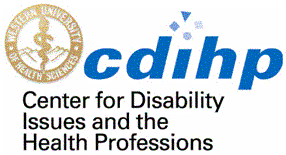
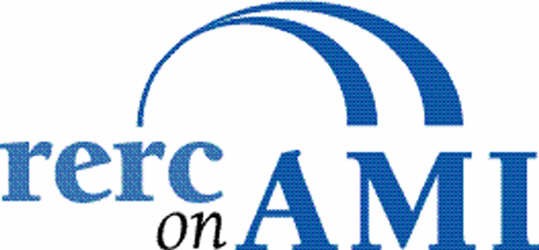
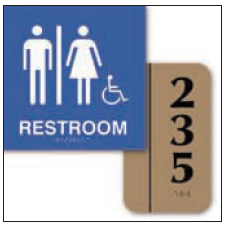
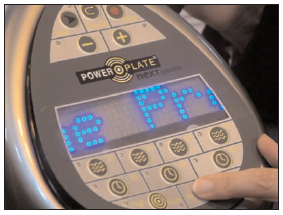
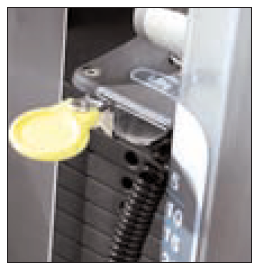
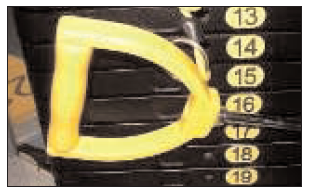
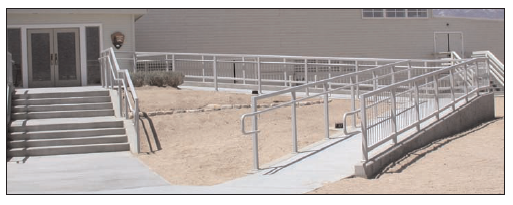
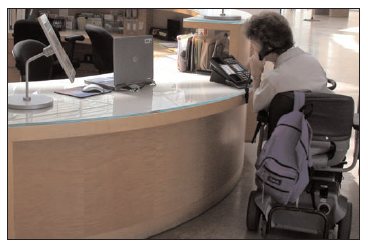
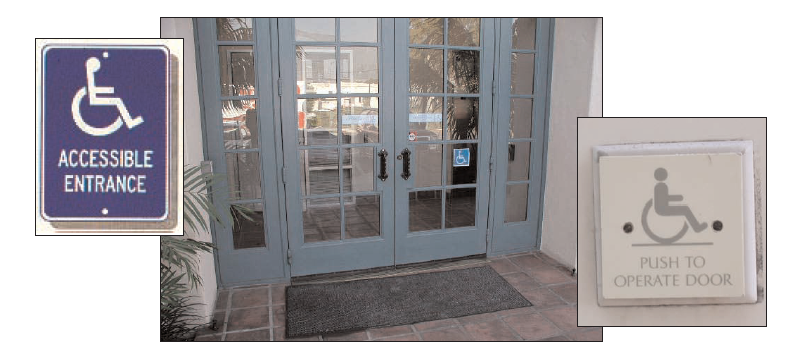
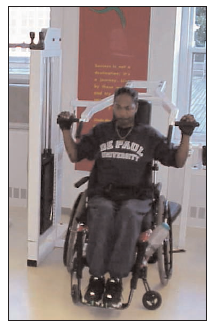
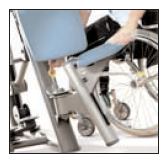
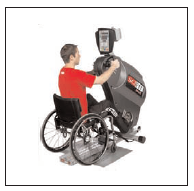
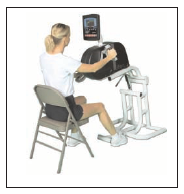
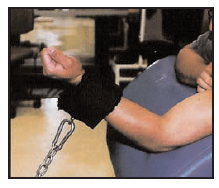
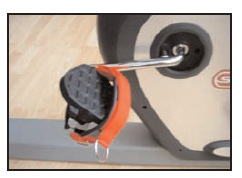
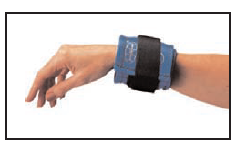
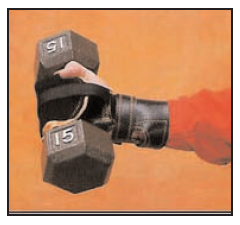
User Comments/Questions
Add Comment/Question